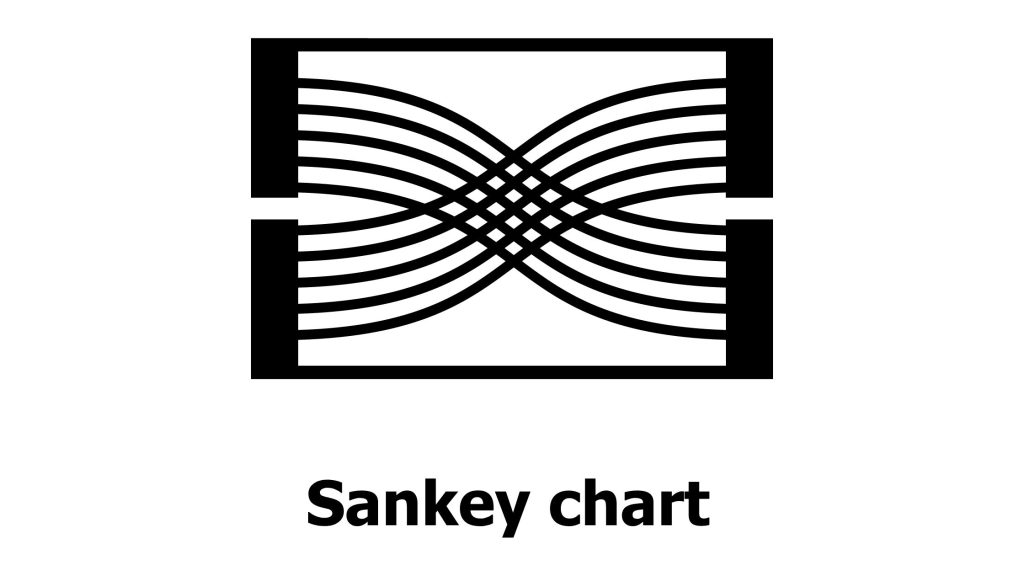Interested in the Sankey diagram for visualizing your customer journey? Understanding the customer journey is crucial for businesses seeking to enhance customer experiences, optimize marketing strategies, and drive sales. A Sankey diagram is an effective data visualization tool that can help companies map out and analyze the customer journey from the first touchpoint to conversion. In this article, we will explore how to create a Sankey diagram to visualize the customer journey and derive valuable insights from the data.
What is a Sankey Diagram?

A Sankey diagram is a flow diagram that illustrates the flow of a particular quantity or value through a system. It uses arrows of varying thickness to show the proportionate flow between different stages or categories. In the context of visualizing customer journeys, the Sankey diagram helps track the progression of customers through different stages of interaction with a business or brand.
The diagram’s flow represents the movement of customers from one touchpoint to another, such as from the website visit to signing up for a newsletter, making a purchase, and eventually becoming loyal repeat customers. The thickness of the arrows reflects the number or percentage of customers moving from one stage to the next, providing a clear and intuitive representation of the customer journey.
Creating a Customer Journey Sankey Diagram
To create a customer journey Sankey diagram, follow these steps:
Step 1: Gather Customer Journey Data
Collect data on various customer touchpoints and interactions with your business. These touchpoints can include website visits, social media engagements, email signups, product purchases, customer support interactions, and more. Make sure the data includes the number of customers or percentage of customers at each stage of the journey.
Step 2: Organize Data into Stages
Group the data into stages or categories representing different touchpoints in the customer journey. Each stage will be a node in the Sankey diagram.
For example, the stages may include:
- Stage 1: Website Visit
- Stage 2: Newsletter Signup
- Stage 3: Product Purchase
- Stage 4: Repeat Customer
Step 3: Calculate the Flow between Stages
Determine the flow of customers between each stage. Calculate the number or percentage of customers moving from one stage to another. This data will determine the thickness of the arrows in the Sankey diagram.
Step 4: Choose a Sankey Diagram Tool
Several data visualization tools, such as Tableau, Google Data Studio, and Microsoft Power BI, offer Sankey diagram functionalities. Choose a tool that suits your requirements and load the data into the tool.
Step 5: Create the Sankey Diagram
Use the chosen tool’s Sankey diagram feature to create the customer journey visualization. Input the data for each stage and set the parameters for the arrow thickness based on the flow between stages.
Step 6: Customize the Diagram
Customize the appearance of the Sankey diagram to improve readability and visual appeal. You can adjust colors, labels, and font sizes to make the diagram more visually engaging.
Step 7: Analyze and Interpret the Diagram
Once the Sankey diagram is ready, carefully analyze the flow of customers through the different stages of the journey. Look for patterns, bottlenecks, and drop-offs in the flow. Identify which stages have the highest and lowest customer retention rates and where improvements can be made.
Benefits of Visualizing Customer Journey with a Sankey Diagram

Visualizing the customer journey with a Sankey diagram offers several benefits:
1. Clarity and Intuition
The Sankey diagram provides a clear and intuitive representation of the customer journey. The thickness of the arrows allows viewers to grasp the relative proportions of customers moving from one stage to another at a glance.
2. Identification of Key Stages
The diagram helps businesses identify key stages where customers may drop off or convert. By pinpointing these critical stages, companies can focus on improving customer experiences and optimizing marketing efforts.
3. Communication and Stakeholder Buy-In
The visual nature of the Sankey diagram makes it an effective communication tool for stakeholders and decision-makers. It facilitates discussions and buy-in for customer journey improvement initiatives.
4. Data-Driven Decision Making
Analyzing the Sankey diagram empowers businesses to make data-driven decisions. By understanding the customer journey’s flow, companies can prioritize investments and interventions for the most significant impact on customer satisfaction and loyalty.
Example Use Case: E-commerce Customer Journey
Let’s explore an example of visualizing the customer journey with a Sankey diagram in the context of an e-commerce business:
- Stage 1: Website Visit
In this stage, potential customers visit the e-commerce website to browse products and explore offerings.
- Stage 2: Add to Cart
At this stage, some website visitors add products to their shopping carts, indicating interest in purchasing.
- Stage 3: Checkout
Customers proceed to the checkout stage, where they provide shipping and payment information to complete their purchases.
- Stage 4: Purchase
This stage represents customers who successfully complete the purchase and become paying customers.
- Stage 5: Repeat Purchase
Loyal customers return to the website for repeat purchases, indicating brand loyalty.
Analyzing the Sankey Diagram
By analyzing the Sankey diagram, the e-commerce business may discover that the drop-off rate between the “Add to Cart” and “Checkout” stages is relatively high. This insight suggests that customers may encounter obstacles or hesitations during the checkout process.
To address this issue, the business can focus on optimizing the checkout process, simplifying steps, and offering multiple payment options. As a result, the customer journey becomes more streamlined, leading to a higher conversion rate and increased customer satisfaction.
Conclusion
Visualizing the customer journey with a Sankey diagram provides businesses with invaluable insights into customer interactions and behaviors. By understanding the flow of customers through different stages, companies can identify areas of improvement and implement data-driven strategies to enhance customer experiences and drive growth.
Whether in e-commerce, SaaS, or other industries, the Sankey diagram serves as a powerful tool for making informed decisions and optimizing


